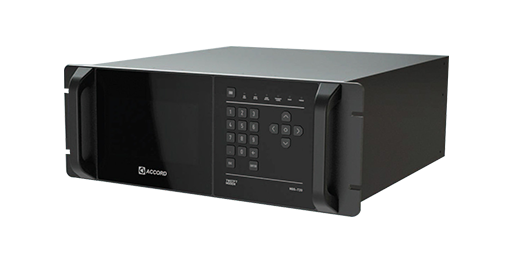
TWSTFT - NGS-T20
Two-way Satellite Time and Frequency Transfer
Two-way Satellite Time and Frequency Transfer (TWSTFT) is a GNSS independent technique of synchronizing multiple station clocks, irrespective of their geographic location, to a remote Master station reference clock via a dedicated satellite link.
Accord's NGS-T20, a TWTFT modem is capable of synchronizing a slave station clock to an accuracy of less than 5 ns with respect to the Master's reference clock. Moreover, in the absence of the satellite link, once synchronized, the Modem can keep the time accurate to less than one microsecond over the next 24 hours.
Request a Demo
